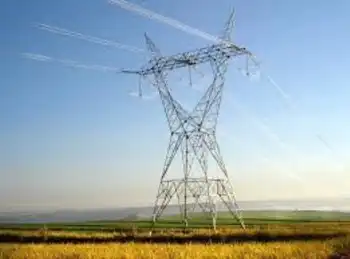Rainstorm relied on to help avoid hydro cuts in Ontario
TORONTO, ONTARIO - A rainstorm August 10 may be all that keeps Ontario from having to resort to brownouts or rotating blackouts, an energy official says.
The province August 9 squeaked through again without having to resort to either measure, but August 10 "is a bit uncertain," said Terry Young of the Independent Electricity System Operator (IESO).
"The demand is not expected to be as high (as August 9 when it was almost 26,000 megawatts) but that is somewhat contingent on what we expect the weather to be. We are looking at a storm to come in over the peak hour" to cool things down, said Young, IESO spokesperson.
The province was able to get by August 9 without extreme measures when the IESO asked consumers to cut back as demand continued to outstrip Ontario's home-grown supply.
This summer's record heat wave has brought the frequent threat of either brownouts — a reduction in power output — or rotating blackouts. Twice last week the IESO called for a 5 per cent voltage reduction. When that doesn't do the trick, rotating power cuts is the next step.
August 9's power crunch was compounded by the fact there were 2,500 megawatts of electricity unavailable due to repairs to generating units, forcing the province to rely on expensive power from northern U.S. states.
Critics say conservation holds the key in the short and long term to reducing demand, and these same critics point out the Liberal government has failed to come up with a comprehensive conservation strategy.
But Ontario's Chief Energy Conservation Officer, Peter Love, argued there is no quick solution, especially when the price of electricity was artificially low for so many years.
"This is not a short-term, quick-fix thing. This is not something you fix in a few days or a few months. This is going to take a concerted effort over a long period of time," said Love, who was appointed by the government. "At 4.3 cents (a kilowatt hour, imposed by the former Tory government) I'm not sure it made sense for people to conserve. It was too cheap."
New Democratic Party Leader Howard Hampton said there are measures that can be taken right away to reduce demand, including offering consumers incentives to replace old refrigerators that gobble up twice the energy of today's models.
"You could target (the energy efficiency strategy) at the GTA, where electricity usage has gone up the most," he said.
"It pays for itself over a three- or four-year period, because they can reduce their hydro bill and they can reduce their natural gas bill and they can use that money to pay back the loan. That can be done overnight."
Related News

Sustaining U.S. Nuclear Power And Decarbonization
WASHINGTON - Nuclear power is the single largest source of carbon-free energy in the United States and currently provides nearly 20 percent of the nation’s electrical demand. As a result, many analyses have investigated the potential of future nuclear energy contributions in addressing climate change. However, few assess the value of existing nuclear power reactors.
Research led by Pacific Northwest National Laboratory (PNNL) Earth scientist Son H. Kim, with the Joint Global Change Research Institute (JGCRI), a partnership between PNNL and the University of Maryland, has added insight to the scarce literature and is the first to evaluate nuclear energy…




